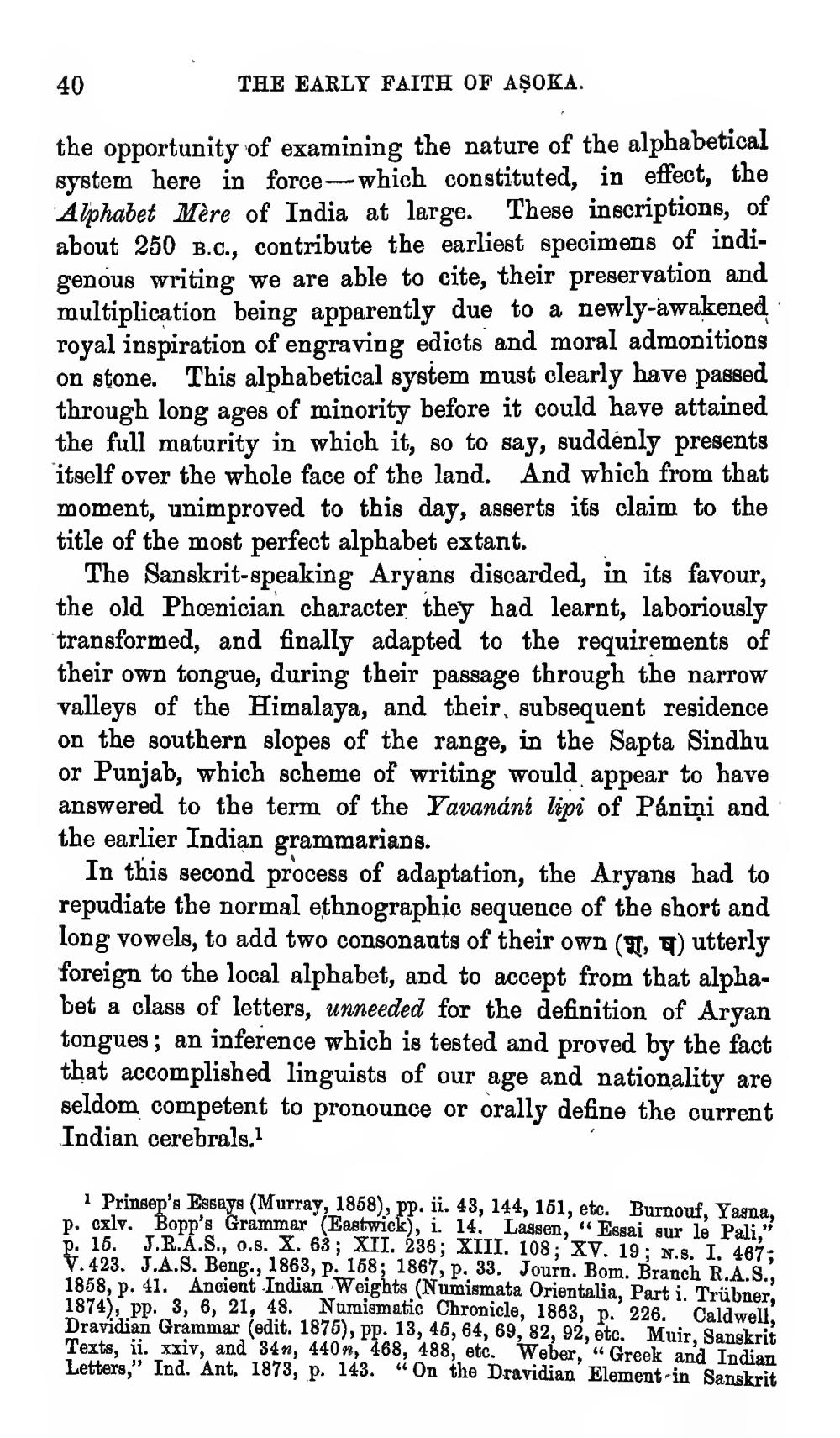________________
40
THE EARLY FAITH OF AŞOKA.
the opportunity of examining the nature of the alphabetical system here in force --which constituted, in effect, the Alphabet Mère of India at large. These inscriptions, of about 250 B.C., contribute the earliest specimens of indigenous writing we are able to cite, their preservation and multiplication being apparently due to a newly-awakened royal inspiration of engraving edicts and moral admonitions on stone. This alphabetical system must clearly have passed through long ages of minority before it could have attained the full maturity in which it, so to say, suddenly presents itself over the whole face of the land. And which from that moment, unimproved to this day, asserts its claim to the title of the most perfect alphabet extant.
The Sanskrit-speaking Aryans discarded, in its favour, the old Phoenician character they had learnt, laboriously transformed, and finally adapted to the requirements of their own tongue, during their passage through the narrow valleys of the Himalaya, and their subsequent residence on the southern slopes of the range, in the Sapta Sindhu or Punjab, which scheme of writing would appear to have answered to the term of the Yavanánk lipi of Pániņi and the earlier Indian grammariang.
In this second process of adaptation, the Aryans had to repudiate the normal ethnographic sequence of the short and long vowels, to add two consonants of their own (T, T) utterly foreign to the local alphabet, and to accept from that alphabet a class of letters, unneeded for the definition of Aryan tongues; an inference which is tested and proved by the fact that accomplished linguists of our age and nationality are seldom competent to pronounce or orally define the current Indian cerebrals.1
1 Prinsep’s Essays (Murray, 1858), pp. ii. 43, 144, 161, etc. Burnouf, Yagna, n. cxly. Bopp's Grammar (Eastwick), i. 14. Lassen, “Essai sur le Pali." p. 15. J.R.A.S., 0.8. X. 63; XII. 236; XIII. 108; XV. 19; N.. I. 467; V.423. J.A.S. Beng., 1863, p. 168; 1867, p. 33. Journ. Bom. Branch R.A.S.. 1858. p. 41. Ancient Indian Weights (Numismata Orientalia, Part i. Trübner. 1874), pp. 3, 6, 21, 48. Numismatic Chronicle, 1863, p. 226. Caldwell, Dravidian Grammar (edit. 1875), pp. 13, 45, 64, 69, 82, 92, etc. Muir, Sanskrit Texts. ii. xxiv, and 344, 440n, 468, 488, etc. Weber, “Greek and Indian Letters," Ind. Ant. 1873, p. 143. “On the Dravidian Element in Sanskrit




